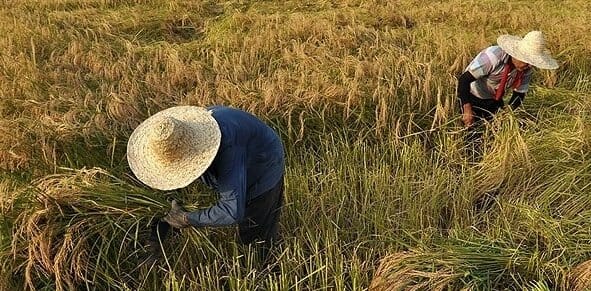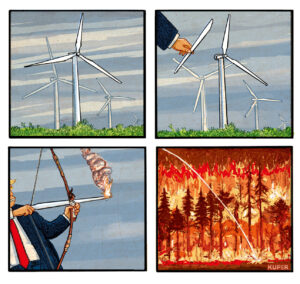Climate Strategy Needs Tailoring to the World’s Poorest
Climate change presents a dilemma. Inaction means ultimate catastrophe. But before then an ill-considered climate strategy could harm the poorest even more. Climate News Network
Climate News Network
An effective climate strategy to protect everyone on Earth, and the natural world as well, is what the planet needs. But Austrian-based scientists have now confirmed something all climate scientists have suspected for more than a decade: there can be no simple, one-size-fits-all solution to the twin challenges of climate change and human poverty.
That catastrophic climate change driven by “business as usual” fossil fuel energy reliance will by 2100 impose devastating costs worldwide, and drive millions from their homes and even homelands, has been repeatedly established.
So has the need to shift from fossil fuels to renewable resources, almost certainly by imposing some kind of “carbon tax” worldwide.
But a new study from the International Institute for Applied Systems Analysis warns that if agriculture is included in stringent climate mitigation schemes, there will be higher costs in the short term.
If humans don’t act, then climate change driven by global warming will create conditions that will put an extra 24 million people, or perhaps 50 million extra, at risk of hunger and malnutrition.
Crop yields could fall by 17%, and market prices could rise by 20% by 2050. And if they do act with a global carbon tax or its equivalent, then by 2050 an extra 78 million – or perhaps 170 million, many of them in sub-Saharan Africa and India – could be priced out of the food market. So for many of the poorest people on the planet, the cure could be worse than the disease.
“The findings are important to help realize that agriculture should receive a very specific treatment when it comes to climate change policies,” said Tomoko Hasegawa, a systems engineer and researcher at IIASA, and of Japan’s National Institute for Environment Studies. He added:
Carbon pricing schemes will not bring any viable options for developing countries where there are highly vulnerable populations. Mitigation in agriculture should instead be integrated with development policies.
Thinking Ahead
Studies such as these should not be taken as excuses for doing nothing: they are precautionary exercises in foresight. All human acts impose some kind of environmental and social costs. Rich nations can absorb the price of climate mitigation. The poorest communities, ironically the ones most at risk from climate change, cannot.
Dr Hasegawa and her co-authors report in the journal Nature Climate Change that they looked at eight global agricultural models to analyze a range of outcomes for 2050.
Their scenarios contemplated socio-economic development options. These included the one in which the world actually pursued the sustainable programme implicitly agreed in 2015 in Paris, when 195 nations vowed to contain warming to “well below” 2°C by 2100.
They also included one in which the world followed current development trends, along with various levels of global warming, and various mitigation policies.
Possible Solutions
And the researchers concluded that, instead of simply focusing on reducing emissions, policymakers would have to look at the big picture.
Carbon taxes will in various forms raise the prices of food, in some models by 110%. But the same study offers potential solutions. Right now, grazing animals in the developing world produce three-fourths of the world’s ruminant greenhouse gases, but only half its milk and beef. So techniques used in the developed world could if introduced at the same time reduce greenhouse gas emissions, promote economic growth, reduce poverty and improve health in the poorest nations.
There are other options: money raised from carbon taxes could be used for food aid programmes to help those areas hardest hit. The point the researchers make is that when it comes to mitigation policies, governments and international organizations need to think carefully.
“Although climate change is a global phenomenon, its specific impacts and efforts to mitigate its impacts will be realized at national and local levels,” the scientists conclude. “As such, future research will be required to assess the unique local and national challenges to adapting to and mitigating climate change while also reducing food insecurity.”
Your support is crucial...As we navigate an uncertain 2025, with a new administration questioning press freedoms, the risks are clear: our ability to report freely is under threat.
Your tax-deductible donation enables us to dig deeper, delivering fearless investigative reporting and analysis that exposes the reality beneath the headlines — without compromise.
Now is the time to take action. Stand with our courageous journalists. Donate today to protect a free press, uphold democracy and uncover the stories that need to be told.






You need to be a supporter to comment.
There are currently no responses to this article.
Be the first to respond.